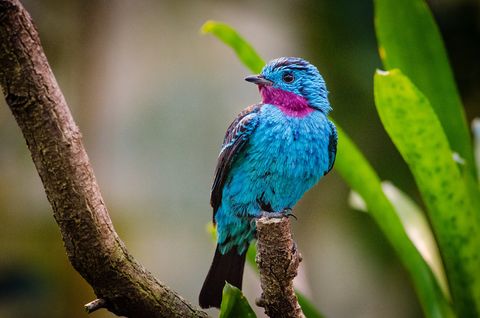Buying lenses for your camera isn’t always simple. The two major manufacturers, Canon and Nikon, both have different options depending on whether you’re getting a lens for a
full-frame or crop sensor camera. Even if you’ve got a Canon camera, you can’t be sure that any Canon lens will work.
Third parties, like Sigma and Tamron, make things even more confusing. They also make lenses that come with a choice of mount. You can get a Sigma 24-105 for either
Canon or
Nikon cameras.
Let’s break things down a bit and look at what mounts Canon and Nikon are currently using for their cameras and lenses.
Canon: EF, EF-S, EF-M
Canon cameras use one of three lens mounts: the standard EF mount and then two derivatives, the EF-S mount and EF-M mount.
The EF mount was introduced by Canon in 1987. It’s what’s used by their modern full-frame cameras like the
5D Mark IV and the
6D Mark II. Every EF lens has an autofocus motor build into it—the EF stands for Electro-Focus. You can’t buy non-autofocus EF lenses from Canon, but third party manufacturers do make manual focus lenses that fit the EF mount. If a lens is listed as for Canon cameras without specifying further, it’s almost certainly an EF lens.
The EF-S mount is used by Canon’s crop-sensor cameras such as the
7D Mark II,
80D and
1300D. Since the sensor is smaller, the lenses can also be smaller and lighter. An EF-S lens will not work on an EF mount camera, however the reverse is not true—EF lenses work perfectly with EF-S mount cameras.
The EF-M mount was created for Canon’s mirrorless cameras such as the
M100. EF-M lenses will only work on EF-M cameras. EF and EF-S lenses can be used with an adapter.
Nikon: FX and DX
Unlike Canon, Nikon only has one lens mount: the F-mount, which was introduced in 1959. There are, however, still a few complications.
Nikon has two sensor sizes: the FX full-frame sensor, used in cameras like the
D810, and the DX APS-C sensor, used in cameras like the
D500. There are lenses available for each that use the F-mount.
The DX sensor is smaller, so lenses designed just for it don’t need to project as big an image. A DX lens will still fit on any F-mount camera, however, they won’t be able to fully use the larger sensor. Modern Nikon FX DSLRs will automatically crop out the empty image space if they detect you’re using a DX lens, but you will be left with a lower resolution, and potentially lower quality, image.
FX lenses are designed to work with the larger FX sensor. They also use the F-mount so you can use them with your DX cameras as well.
Nikon also has a mirrorless mount: the Nikon 1 mount. Nikon 1 lenses can only be used with Nikon 1 cameras, although F-mount lenses can be used with an adapter.
Any third-party lens designed for Nikon cameras will use the F-mount, though some might be designed just for DX cameras.
Before you get too complacent and think you can use any Nikon lens on any camera, there’s another wrinkle. Unlike Canon cameras, where every lens has an autofocus motor, some Nikon lenses, like this
50mm f/1.8, don’t. Instead, they use an autofocus motor that’s built into high end Nikon DSLRs. Confusingly, these lenses are called AF lenses.
At the moment, the only Nikon cameras without an autofocus motor are the D5600, D5500, D5300, D5200, D5100, D5000, D3400, D3300, D3200, D3100, D3000, D60, D40X and D40. These are all entry-level DX models. You can still use AF lenses on them, however you will need to manually focus them.
Lenses with an autofocus motor build in are called either AF-S or AF-P, depending on the kind of motor they have. These can be used on any Nikon DSLR and will always have autofocus.
Camera and lens standards have changed and developed as new technologies have evolved. Camera gear, however, can last along time. Most lenses from the 90s will work on modern Canon cameras and some lenses from the 70s will work on Nikon cameras. Just make sure they’ve got a compatible mount.































